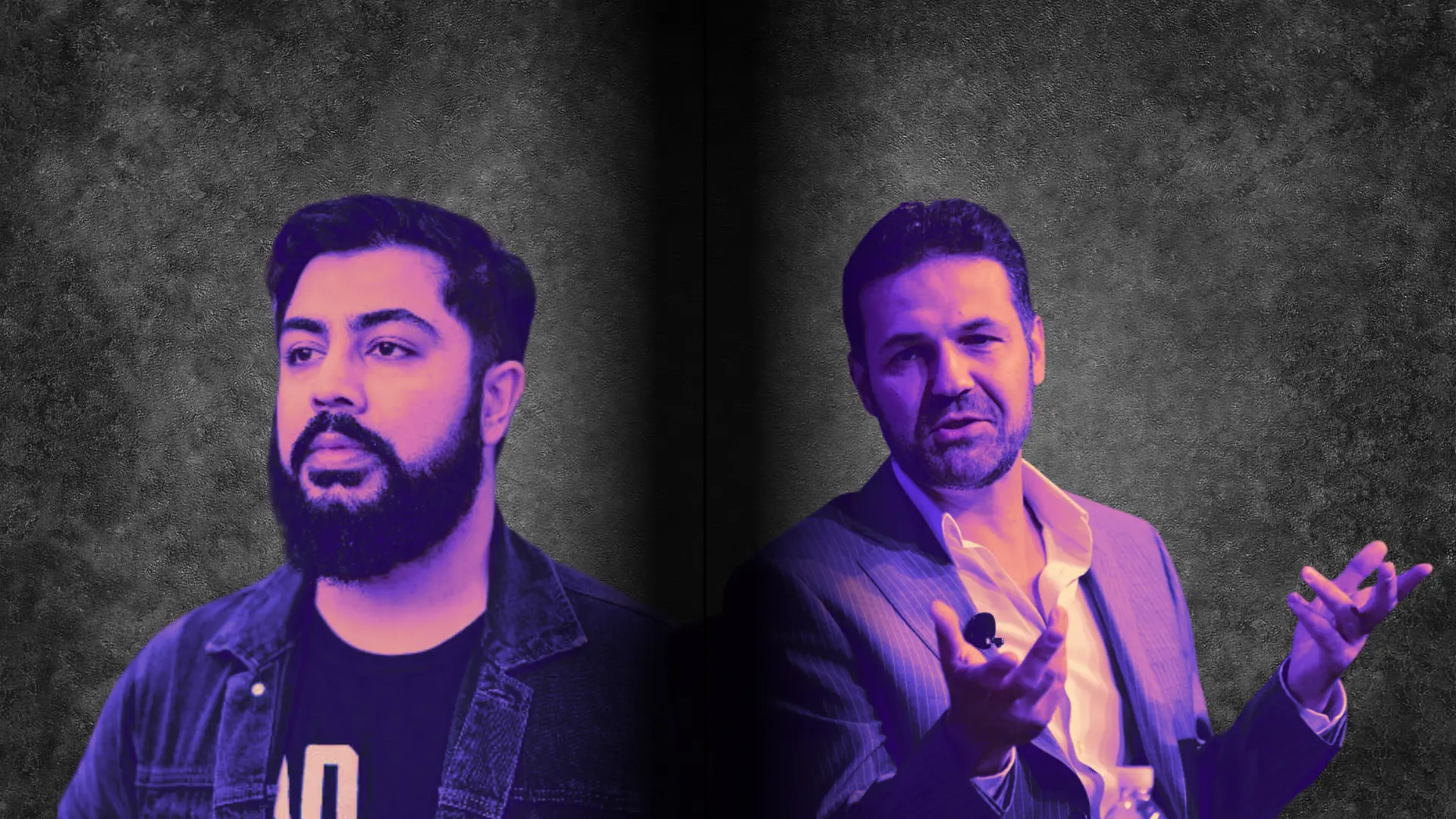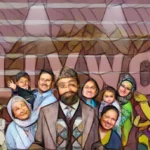Within the pages of literature, the haunting echoes of war and displacement reverberate through the stories of Afghan diaspora writers. In this comparative review, we explore the works of two prominent authors, Jamil Jan Kochai and Khaled Hosseini. Both authors poignantly capture the lasting effects of the Afghan war on individuals and their families. Through their distinct storytelling styles, they shed light on the complexities of the conflict. They offer contrasting perspectives on the role of the West, the plight of the Afghan people, and the longing for a better future.
Amidst the labyrinth of mud brown houses, once a testament to Islamic architecture, the center of E-gaming in the 1980s, and contemporary Europe of the region, now haunted by the atrocities caused by an external demon, the scars of war run deep.
For three generations, the Afghan people have grappled with the consequences of conflict. They have torn themselves between their homeland and the pursuit of a safer existence across distant borders. Jamil Jan Kochai, born in an Afghan refugee camp in Peshawar, Pakistan, carries these traumas with him. He allows them to seep into his literary works, such as “99 Nights in Logar” and “The Haunting of Haji Hotak and Other Stories.” Kochai’s tales explore the profound impact of war on families. He unravels the layers of trauma that continue to envelop them, even miles away from the accursed territory.
The Portrayal of Afghanistan and Taliban
In Kochai’s narratives, Afghanistan emerges as more than just a nation; it becomes a pipe dream, an elusive concept, veiled in the aftermath of conflict. His stories, including the opening piece “playing ‘metal gear solid vs the phantom pain,'” transport readers through the lens of a second-person narrator. This narrator is thrust into his father’s past through the medium of a video game. As the character navigates the virtual landscapes of Metal Gear, he confronts the stark realities of 1980s Afghanistan. These realities are reminiscent of the countless Afghan lives lost in the virtual battlegrounds of games like Call of Duty. This immersive experience serves as a powerful metaphor for the profound impact of conflict on the Afghan people, bridging the gap between history and contemporary experiences.
Moreover, Kochai’s portrayal of the Taliban goes beyond simplistic labels, offering a nuanced understanding of their motivations and actions. In his narratives, he depicts the Taliban as individuals driven by a hardline ideology. This ideology is deeply rooted in their traditionalist approach and socio-cultural context. Kochai delves into the complex interplay between historical resistance against colonizers and the intricate dynamics within Afghan society. He sheds light on the multifaceted factors that contributed to the Taliban’s rise. Additionally, his storytelling underscores the imperialistic nature of American involvement in Afghanistan. It provides insights into the complex web of influences that shaped the Afghan conflict.
The Continued Impact of War on the Afghan People
Writing from the most unhealed part of the Afghan diaspora, Kochai reflects on how the West took all they had and then tried to claim what they made for themselves outside their homeland. This occurred after examining all Afghans and Muslims post-9/11. Through his distinctive narrative, Kochai invites readers to contemplate the layered nature of Afghanistan’s history and its reverberations in the present. By exploring virtual landscapes and the complex motivations of the Taliban, he showcases the indomitable spirit of the Afghan people. He also addresses their deep yearning for a better future.
Kochai’s narratives serve as poignant reminders of the profound consequences of war, discrimination, and displacement while highlighting the resilience and complexity of Afghan society.
On the other hand, Khaled Hosseini, the acclaimed author of “The Kite Runner” and other novels, provides a unique perspective on the Afghan war and its aftermath. While he acknowledges the undeniable trauma inflicted upon the Afghan people, his writings offer a more complex portrayal. His work goes beyond the singular focus on the haunting specter of conflict.
In Hosseini’s works, particularly “The Kite Runner,” he portrays the war not merely as a catastrophic event. Instead, he presents it as something woven into the fabric of everyday life for the Afghan people. By depicting the war as a recurring and almost ordinary occurrence, Hosseini conveys a sense of familiarity. This familiarity has developed among the Afghan people due to decades of political instability and violence.
The Divisions within Afghan Society
One notable aspect of Hosseini’s narratives is his exploration of internal divisions within Afghan society. He sheds light on the discrimination and marginalization faced by ethnic minorities like the Hazaras. Hosseini highlights how these internal divisions can often eclipse the immediate impact of external factors, such as drone strikes on innocent civilians. By delving into these divisions, Hosseini underscores the complex social dynamics within Afghanistan. He also reveals the long-standing prejudices that persist even during times of war.
Hosseini focuses on the ban on flying kites as a symbol of freedom and joy amid the turmoil. This emphasis highlights how war intertwines with everyday life. While the plight of innocent Afghans caught in the crossfire is undoubtedly significant, the prohibition on a seemingly innocent and traditional pastime like flying kites takes on greater symbolic importance in his narratives. It signifies the suppression of personal liberties and the erosion of cultural practices. This serves as a reminder of the broader impact of conflict on Afghan society. While he acknowledges the trauma inflicted upon the Afghan people, his focus on these nuanced aspects broadens the narrative. It highlights the multifaceted nature of the conflict and its aftermath.
By presenting war as a pervasive backdrop to daily existence and exploring the internal divisions within Afghan society, Hosseini’s writings offer a contrasting perspective on the Afghan war.
The Deep Trauma of War
In the tapestry of Afghan diaspora literature, the haunting echoes of war and displacement are interwoven with the longing for a better future. Jamil Jan Kochai and Khaled Hosseini each offer distinct voices. Through their works, they provide windows into the complexities of the Afghan war, its aftermath, and the struggles faced by the Afghan diaspora.
While the perspectives within the Afghan diaspora may vary, one crucial distinction lies in how the trauma of war is portrayed.
Some writers, like Jamil Jan Kochai, delve into the depths of that trauma, unearthing its profound and lasting effects. Through their evocative imagery and emphasis on the impact of external forces, they shed light on the wounds that continue to fester in the hearts and minds of those torn from their homeland. Their stories serve as a reminder of the horrors experienced by individuals and families. They underscore the fact that war is a harrowing ordeal that leaves scars that may never fully heal. On the other hand, some may romanticize or normalize the war. They shift the focus to other aspects of Afghan society, exploring the resilience of the Afghan people and the internal struggles that shape their lives.
However, regardless of the perspective, it remains evident that war is war, and its trauma persists, irrespective of how it is portrayed. The diaspora’s diverse perspectives and priorities add depth to the conversation, serving as a reminder that the collective longing for a better Afghanistan arises from the shared understanding that the wounds of war must be acknowledged and addressed.
The views expressed in this article are the author’s own. They do not necessarily reflect the editorial policy of the South Asia Times.
Haiqa Shah is a researcher fascinated by the connections between entertainment, history, and narrative building





Add a Comment